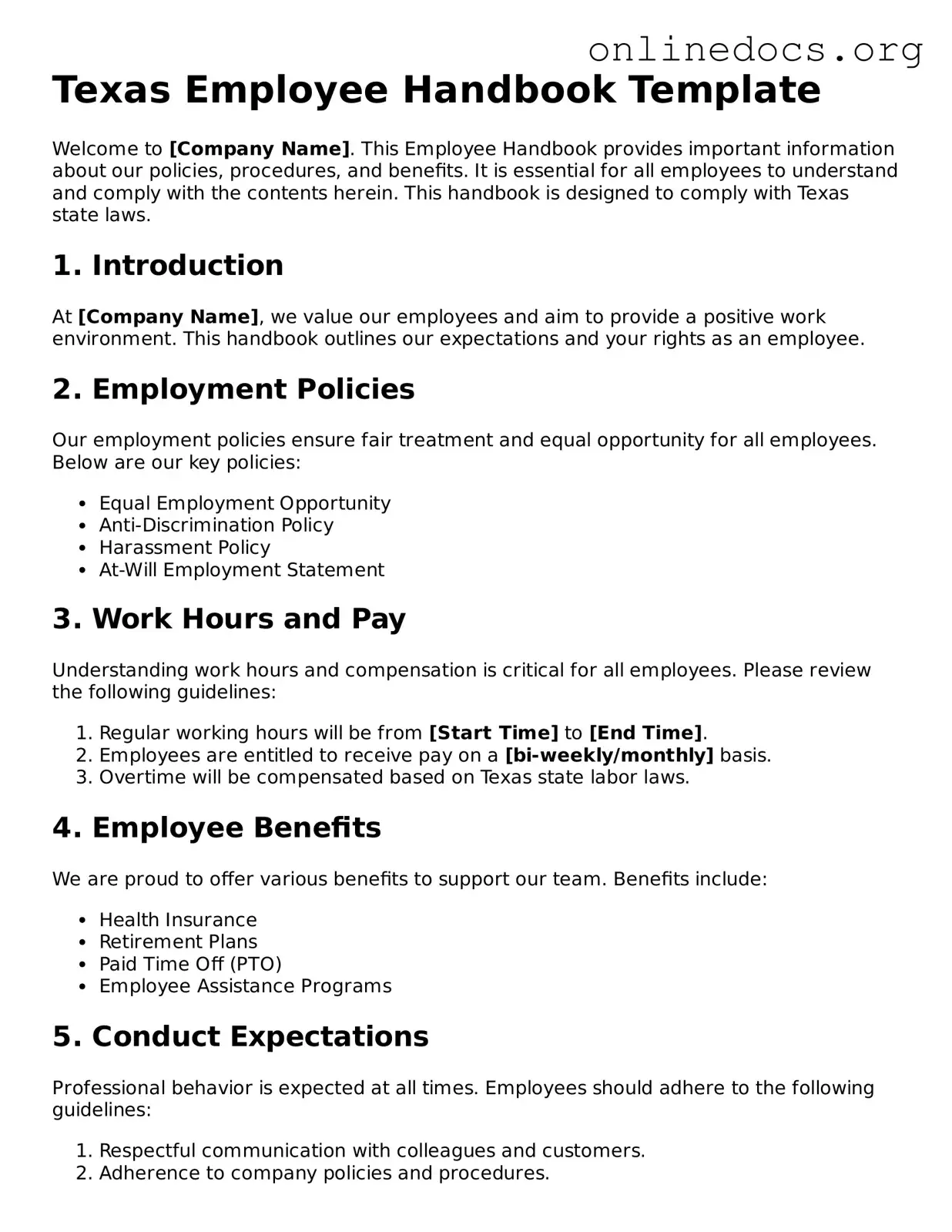The Texas Employee Handbook form shares similarities with the Employee Manual, which serves as a comprehensive guide for employees regarding workplace policies and procedures. Like the Employee Handbook, the Employee Manual outlines company expectations, employee rights, and responsibilities. Both documents aim to create a clear understanding of the workplace environment and promote consistency in employee treatment.
Another document similar to the Texas Employee Handbook is the Workplace Safety Manual. This manual focuses specifically on safety protocols and procedures to ensure a safe working environment. It includes guidelines on reporting hazards, emergency procedures, and safety training requirements, paralleling the Employee Handbook’s emphasis on maintaining a positive and secure workplace culture.
The Code of Conduct is also akin to the Texas Employee Handbook. It delineates acceptable behaviors and ethical standards within the workplace. While the Employee Handbook provides a broader overview of policies, the Code of Conduct dives deeper into specific behavioral expectations, reinforcing the overall message of professionalism and integrity.
When engaging in any high-risk activities at the workplace, it is essential to be aware of the various liability forms available. One such form is the California Release of Liability form, which allows individuals to waive their right to sue for any injuries or damages that may arise during these activities. To ensure you are properly informed and protected, it's important to understand how to fill out this document by visiting fillpdf-forms.com/.
Additionally, the Orientation Guide resembles the Texas Employee Handbook in that it serves as an introductory resource for new employees. The Orientation Guide typically includes essential information about the company’s mission, values, and key policies, much like the Employee Handbook, which provides a foundational understanding of the workplace environment.
The Benefits Guide is another document that shares similarities with the Texas Employee Handbook. It outlines employee benefits, including health insurance, retirement plans, and leave policies. While the Employee Handbook covers a wider range of topics, the Benefits Guide focuses specifically on the advantages available to employees, complementing the information provided in the Handbook.
The Performance Evaluation Policy is comparable to the Texas Employee Handbook as it details the criteria and processes for assessing employee performance. This document establishes expectations for performance reviews, similar to how the Employee Handbook sets forth general workplace expectations and standards.
The Anti-Discrimination Policy also aligns with the Texas Employee Handbook. It specifies the company's commitment to providing a discrimination-free workplace and outlines procedures for reporting discrimination. This policy supports the broader objectives of the Employee Handbook, which aims to foster an inclusive and equitable work environment.
The Employee Grievance Procedure is another document that parallels the Texas Employee Handbook. It provides a structured process for employees to voice concerns or complaints. While the Employee Handbook outlines general policies, the Grievance Procedure offers specific steps for addressing workplace issues, ensuring that employees feel heard and supported.
Lastly, the Leave of Absence Policy is similar to the Texas Employee Handbook, as it details the types of leave available to employees, including sick leave, vacation, and family leave. This policy complements the Employee Handbook by providing specific information on employee rights regarding time off, thereby enhancing the overall understanding of workplace policies.
